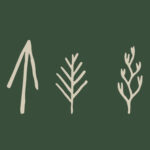Communities invited to discuss potential return of beavers to Loch Ness area
A community discussion looking at the potential for beaver reintroduction to the Loch Ness area is being run by Trees for Life in partnership with Beaver Trust during September and October.
The community and stakeholder engagement will gather views on the opportunities and concerns that might come with the native species coming back to some of the beaver-friendly waterbodies close to the loch between Fort Augustus and Lochend.
The River Ness was identified by NatureScot in 2022 as one of Scotland’s most suitable catchments for beavers. It offers an extensive network of beaver-friendly habitats, including wetlands, freshwater and more than 3,000 hectares of suitable woodland, with low risk of negative impacts and high potential for nature restoration. The community discussion will investigate this more closely with input from people who live and work locally.
Local communities and stakeholders will be asked to help consider how officially reintroducing beavers to the area could work in practice. The detailed public engagement is a crucial first step before any specific reintroduction sites might be proposed.
Alan McDonnell, Head of Nature Restoration at Trees for Life, said: “Bringing beavers back to the Loch Ness area can offer real benefits for communities, businesses, landscapes and nature, but needs careful consideration. So we want to hear a full range of views and community voices, including any concerns about changes beavers might bring.”
Beavers are highly adaptable and live alongside people in a variety of freshwater environments. They can bring economic benefits to communities through eco-tourism and ecosystem services. The wetlands they create benefit other wildlife, help nature and people adapt to climate change, purify water and reduce flooding. In some situations, beavers can cause problems on farmland or for other land uses, although these can often be managed.
Dr Roisin Campbell-Palmer, Head of Restoration at Beaver Trust, said: “We look forward to discussing the benefits and impacts of beavers in the area with those attending the events, including how to establish healthy wild populations, support long-term coexistence with local people and land uses, and ensure the species can thrive. This forms an important step towards expanding the beaver population into suitable areas as part of Scotland’s National Beaver Strategy.”
A series of in-person and online events, as well as one-to-one discussions, will engage with people’s views on the opportunities and concerns that might come with beavers returning to the area. This includes practical mitigation and monitoring steps that may be required to maximise the benefits of the species.
Professor Jill Robbie, Chair of the Scottish Beaver Advisory Group and Deputy Chair of NatureScot, said: “Scotland’s Beaver Strategy aims to increase the current range of beavers in Scotland, restoring them to suitable parts of the country, with appropriate management and mitigation where necessary. We welcome the launch of this consultation which is aligned with the implementation of the Strategy and it is vital that local communities and stakeholders are engaged, and views considered, to ensure any translocation is a success.”
As part of the community discussion, during September and October there will be a series of welcoming drop-in events staffed by Trees for Life and Beaver Trust in Drumnadrochit, Foyers, Invermoriston, Fort Augustus, Dores and at Trees for Life’s Dundreggan Rewilding Centre in Glenmoriston. NatureScot staff will also be in attendance to answer questions.
There will be an emphasis on local views and engagement. A mailshot will be delivered to households in the Loch Ness area, accompanied by locally targeted social media outreach.
The community discussion is in line with the Scottish Government’s Scottish Beaver Strategy, which was published in 2022 with the engagement of more than 50 major stakeholders. The strategy aims to ensure communities can maximise the benefits of beavers, with any negative impacts minimised, and to actively expand the beaver population into appropriate areas.
Beavers cannot be captured, transported or released in Scotland without a licence from NatureScot. Under both the Scottish Code for Conservation Translocations and the Scottish Beaver Strategy, an essential step in applying for any reintroduction licence is public engagement to carefully consider all the benefits and issues that could come with a specific project. The ecological aspects are also an essential issue, with detailed habitat assessments a key part of this.
Beavers are known as a ‘keystone species’ because they play a vital role in maintaining healthy living ecosystems. They were officially reintroduced to Scotland in 2009 after being hunted to extinction in the country some 400 years ago.
The project has been made possible thanks to funding to Trees for Life from generous supporters, and from the Fred Foundation, Forest Peace Foundation, and Rewilding Britain’s Rewilding Innovation Fund.
For more details, visit treesforlife.org.uk/ness-beaver-project.

